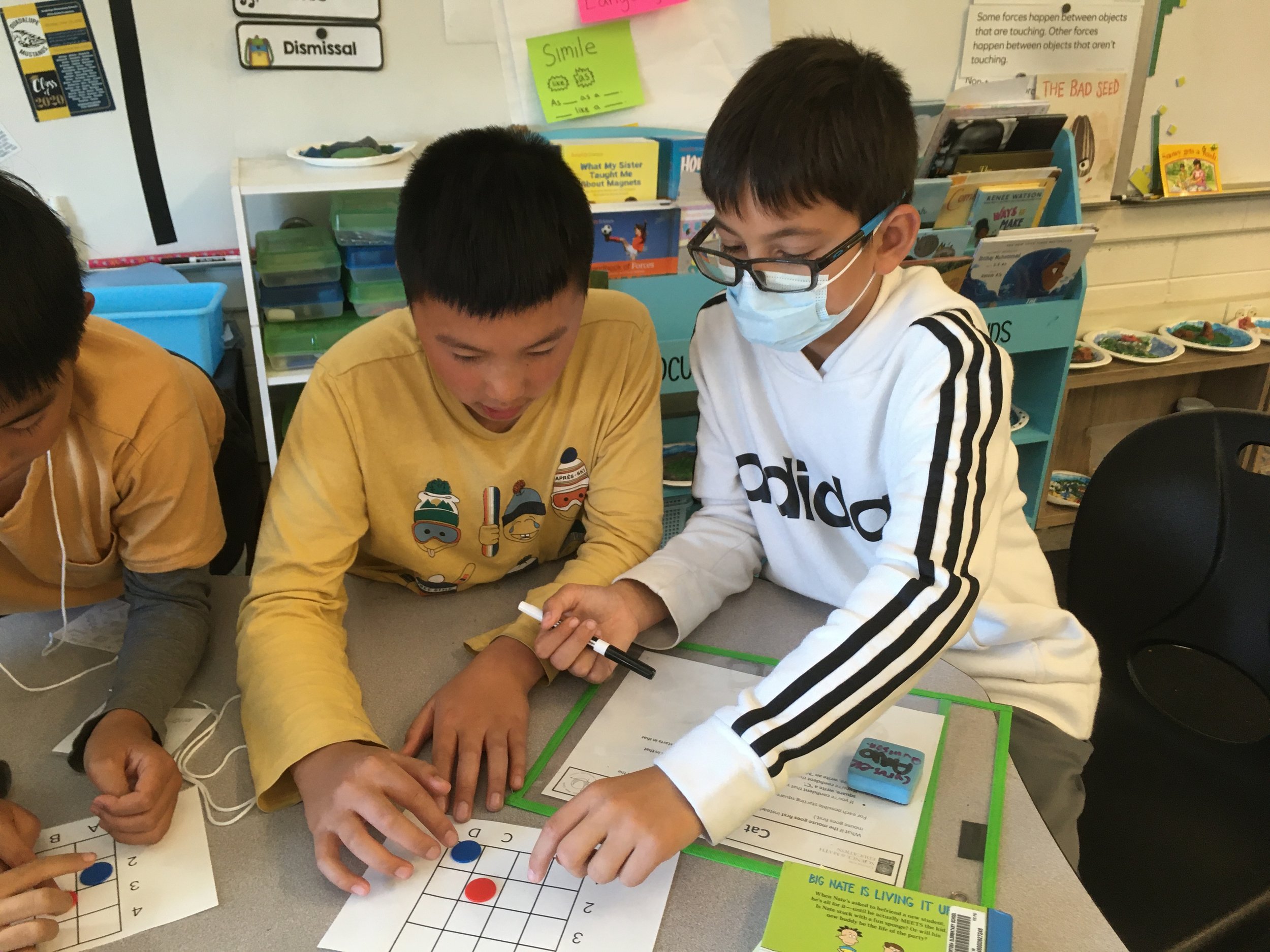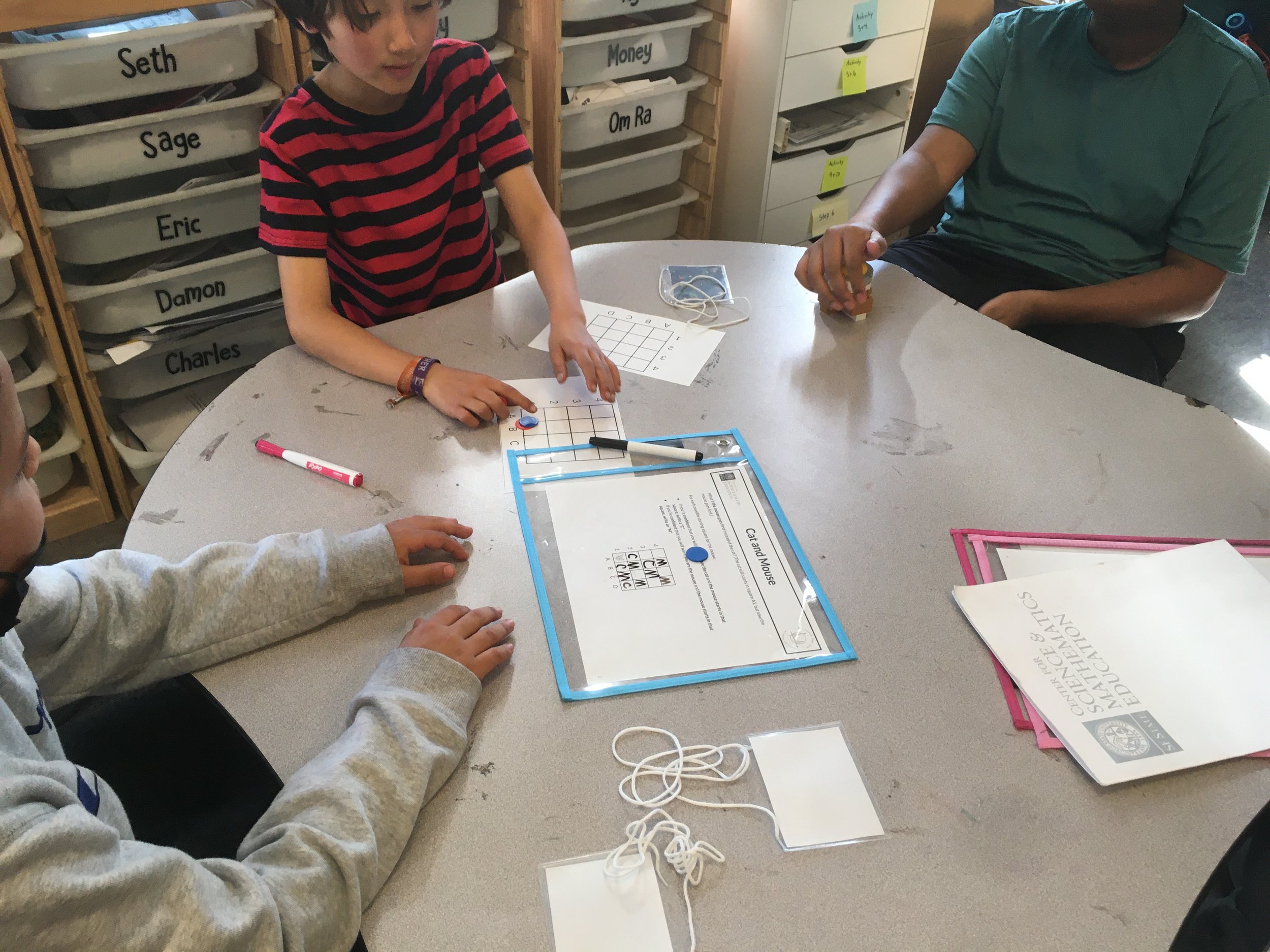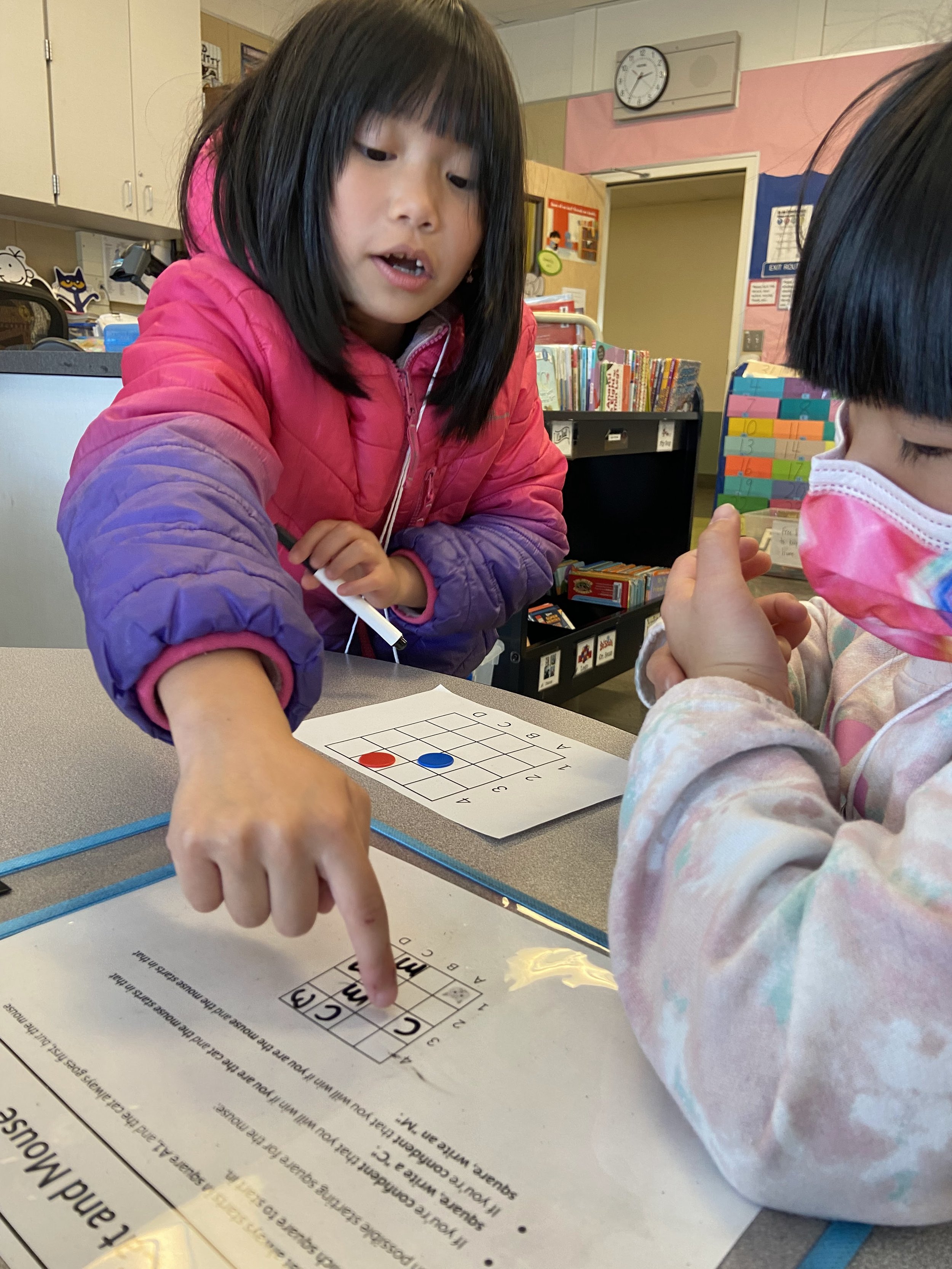Cat and Mouse
How it works
Cat and Mouse is a 2-player game. Here's how to play:
The cat and the mouse start out in different squares on a 4 x 4 grid. The cat starts in the bottom left corner, and the mouse starts in the bottom right corner.
The cat and mouse take turns making moves, with the cat going first. On each turn, they can move one square horizontally or vertically, but not diagonally.
The cat gets 7 moves to catch the mouse. If the cat catches the mouse by its 7th move, the cat wins. If the cat hasn't caught the mouse by its 7th move, the mouse wins.
Can you beat an expert at this game if you're allowed to choose whether to be the cat or the mouse? What if the mouse starts in a different square? For which of the possible starting squares for the mouse is it better to be the cat, and for which is it better to be the mouse? What if the mouse goes first instead of the cat?
In this activity, students start by playing this 2-player game as described above. They explore the different possible starting squares for the mouse on a 4 x 4 board, determining for each square whether it's better to be the cat or the mouse if the mouse starts in that square (assuming the cat starts in the bottom left corner and goes first). Then they do the same with the mouse going first instead of the cat. They also try playing the game on different game boards.
Game board handout (4 x 4 board)
Additional game boards handout
Data recording handout (4 x 4 board)
Data recording handout (additional game boards)
Why we like this activity
It’s fun! Students enjoy playing the game and figuring out how to win with the mouse starting in different squares.
It helps students develop game-theoretic reasoning.
It requires students to engage in mathematical habits of mind:
Using logic, finding and using strategies, and understanding and explaining when trying to figure out how to beat an expert
Finding patterns, making and testing predictions, and understanding and explaining when trying to figure out when it's better to be the cat and when it's better to be the mouse based on the mouse's starting square
It has a low floor and a high ceiling: Students can start playing the game by trial and error, but figuring out how to beat an expert is more challenging. And there are interesting patterns to find (and to try to understand) when exploring when it's better to be the cat and when it's better to be the mouse based on the mouse's starting square.










